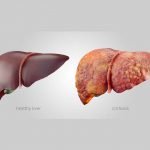Peroral endoscopic myotomy (POEM) new tool for treatment of achalasia cardia
Achalasia, an esophagus motility disorder, results from myenteric plexus ganglion cells gradual degeneration in lower esophagus. Lower esophageal sphincter (LES) failing to relax in association with loss of peristalsis as well as impairing of the deglutition indicates achalasia. It is a rare, gender neutral occurrence in individuals aged 25-60, though it is sometimes reported in pediatric and elderly population as well. Though the etiology is unclear so far, genetic as well as Herpes Simplex Virus latent infection could be the reason for the above disease. The diagnosis requires endoscopic evaluation as it being an insidious disease. The patients could go for as long as 4.7 years, prior to the diagnosis. Long lived achalasia results in progressive dilatation of lower esophagus and lower esophageal sphincter hypertrophy. Several diseases could mimic achalasia such as Chagas disease, sarcoidosis, fabry disease, amyloidosis, etc which makes endoscopic evaluation a necessity, so that it be also differentiated from carcinoma of the gastro esophageal junction (GEJ) or pseudoachalasia. In several advanced cases, individuals are at risk of upper respiratory infections such as pneumonia, aspiration, and lung abscesses. Reversal of degenerative process of ganglion cells is not known yet, nor is the restoring of normal esophageal function. Treatment of achalasia is focused on decreasing the resting pressure of the lower esophageal sphincter.
Classification
Type I (Classic) – 100% failure of peristalsis, no significant change in esophageal pressure while swallowing
Type II (Intermittent) – 100% failure of peristalsis, pan esophageal pressure with ≥ 20 % of swallow
Type III (Spastic) – Abnormal spasms during swallowing, abnormal peristalsis, premature contraction with distal contractile integral > 450mmHg-s-cm in ≥ 20% of swallows.
Symptoms
The symptoms may include:-
- Chest pain
- Regurgitation
- Dysphagia
- Weight loss
Treatment
Several treatments exist such as botulinum toxin (BT) injection, oral nitrates usage, and physical disruption of muscular bundles of lower esophageal sphincter by pneumatic dilation, laparoscopic myotomy or the most effective treatment to exist so far i.e. Peroral endoscopic myotomy (POEM).
Peroral Endoscopic Myotomy (POEM): The most recent, effective and safe procedure!
It is used to treat primarily achalasia, but also several motility disorders such as Jackhammer esophagus, diffuse esophageal spasm, type 3 achalasia. It is a minimally invasive intervention without any external incision. In this procedure
Through the mouth an endoscope is inserted, incision is made in the mucosa.
Then, via the submucosal fibers careful dissection, gastroscope is introduced into the submucosal space. Submucosal dissection is done along with maintaining the mucosal layer integrity creating a tunnel.
Myotomy of inner circular muscle bundles is done, which starts from 6 cm above the gastro esophagus junction (GEJ) extending 2-3 cm below the GEJ.
After myotomy, closure of earlier mucosal incision is done.
This procedure enables food and liquids to pass into the stomach, a process impaired in achalasia.
What makes POEM a Superlative Choice?
Out of all the treatments, POEM appears to be one of the best choice for achalasia as it is less invasive, no scarring as incision is not made through the skin. It has shown 82-100 % efficacy in the management of symptoms. It has proven to be effective in improving dysphagia, esophagitis. It is totally a safe choice to undergo POEM again for recurrent achalasia. Patients with failed previous endoscopic or laparoscopic treatment successfully underwent POEM. It is a cost effective treatment in comparison to the other procedure i.e. laparoscopic Heller myotomy and has an excellent clinical response with short hospital stay. It also has low post-operative adverse event which could be managed medically.
For type I & type II achalasia standard POEM technique is performed wherein, for type III myotomy is done in accordance with the spastic segment.
Pre-operative process
After confirmation of achalasia, a clear liquid diet is maintained for 2 days, prior of undergoing the procedure and NPO the night before the procedure. Assessment of any infection is done and treatment is given if any infection is suspected. A broad- spectrum antibiotic is usually given intravenously on the day of the procedure.
Post-operative care
Gastrografin swallow study with fluoroscopy is performed to check for any leakage. On day 2 a soft diet can be started for upto 10-14 days after which a regular diet can be consumed. Antibiotics for several days and proton pump inhibitors for a minimum of 14 days are ideally given. 3-6 month follow up should be done ideally.
Opt for Skilled hands
Since the procedure calls for precise submucosal incision and selective myotomy of inner circular layer alongside preserving the longitudinal outer layer, an expert endoscopist should perform the above procedure. As the outer longitudinal muscular layer is very fragile and thin, selective myotomy requires an experienced endoscopist.
Rare Complications
POEM is an extremely feasible and safe procedure. Complications are very rare, some of them includes –
- Gastroesophageal reflux disease (GERD)
- Bleeding
- Mucosal tear- Occurs due to narrowing of submucosal space and is closed with endoclips, glue or over- the-scope clips. If not treated could lead to mediastinitis.
- Pneumoperitoneum- Prompt decompression using a large bore needle, though resolves spontaneously
- Pneumothorax- Resolves spontaneously, unless occurrence of respiratory compromise is seen then the condition is treated accordingly.
Dr. Kapil Sharma is a very competent gastroenterologist (Director and Head Gastroenterology) at Batra hospital and medical research centre, New Delhi with 15+ years of experience in the field of gastroenterology and hepatology. Book your appointment at GASTROQURE Liver, GI & Endoscopy clinic, K81 B Kalkaji, New Delhi- 110019 today!
Reach us out on +91-9625818164




